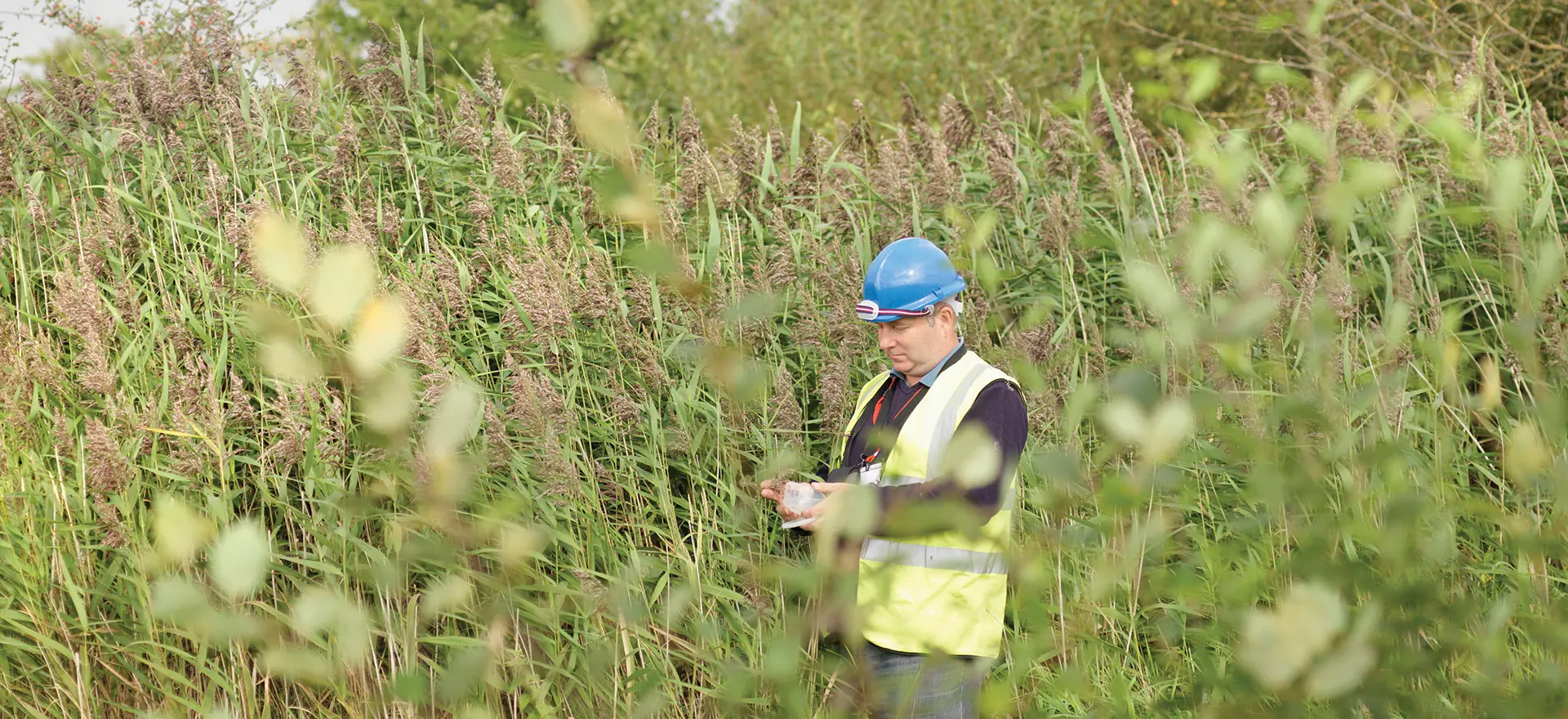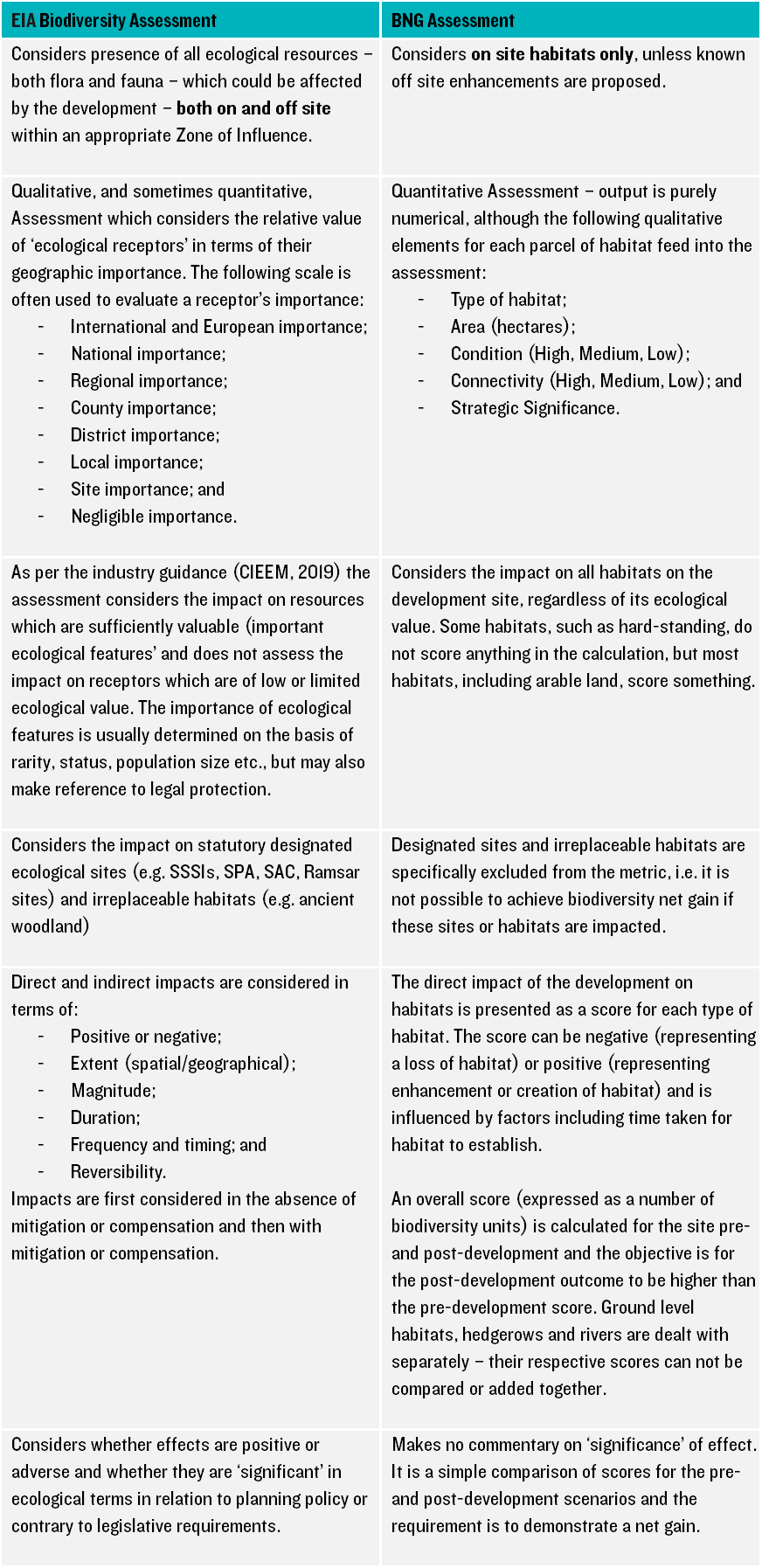Biodiversity, the variety of all life on earth, is in steep decline both nationally and globally and unless this is addressed quickly there could be extreme consequences from whichever end of the lens you look at it. One way that the Government intends to address this is through the requirement for all new developments in England to deliver Biodiversity Net Gain (‘BNG’). In short, this means that development will have to leave biodiversity in a better state than it in was beforehand.
This requirement will be introduced by the
Environment Bill, which is due to be enacted later (autumn) this year. Once enacted there will be a two year transition period, after which all planning permissions in England will be subject to a mandatory condition that requires the delivery of a 10% net gain in Biodiversity from the pre-development baseline position.
To make this system work Defra has developed a metric which uses habitat features as a proxy measure for Biodiversity and a straight forward calculation to give a numerical value to a site’s baseline Biodiversity value and its post development value. The assessment of a development’s baseline and post-development biodiversity value is known as a BNG Assessment.
An Environmental Impact Assessment (‘EIA’) is an assessment of the likely significant impacts of a qualifying development on the environment undertaken in accordance with the
Town and Country Planning (EIA) Regulations 2017. It is a decision making tool designed to protect the environment by ensuring that, when determining a planning application, the decision maker has full knowledge of the development’s likely significant effects on the environment, and takes this into account when making their decision.
EIAs can cover a range of technical topics depending on the location and nature of the development, and for each topic the EIA contains a technical assessment of the likely effects. Biodiversity, or Ecology, is often included as a technical topic in an EIA which begs the question of whether there is a role for a BNG Assessment in an EIA, and if so what this could be. Should the BNG quantification feature in an EIA given that there will soon be a mandatory requirement to offset losses and deliver a gain? It also leads to another question we in the Lichfields EIA team have been considering, which is whether and how the EIA should report on compensation and enhancement measures more widely.
So, how could the BNG Assessment fit into an EIA Biodiversity Chapter? Well, the assessments are fundamentally different in a number of ways which means that it is not simply a case of ‘slotting in’ the BNG Assessment to the biodiversity assessment of an EIA. The table below shows the key differences between the assessments:
Table 1: Key differences between BNG and EIA Ecology assessments
In summary, the biodiversity assessment within EIAs considers the potential direct and indirect impacts of the development on habitats and species on the site and beyond. BNG Assessments, on the other hand, are relatively narrow quantitative assessments of direct impacts on habitats on the site plus any known off site habitat creation or enhancement. These key differences are important and mean that the BNG Assessment doesn’t fit neatly in the technical biodiversity assessment of an EIA. It is important to note that both types of assessment are useful and important and that the differences in their scope and methodology are reflective of their purposes, and the policy/decision making goals they aim to address.
Despite these differences, the EIA and BNG requirement share a common strategic aim – to lessen the impact of development on the environment, and in the case of BNG for development to positively contribute to the state of the environment. Therefore, it seems illogical to entirely separate the two, although it is important to understand how a BNG Assessment can feed into an EIA in a way which is both relevant and effective.
BNG actively encourages developments to follow the well established mitigation hierarchy to first avoid harm, then to minimise it, then to mitigate any harm and finally to compensate for any harm to habitats. If developers are unable to reach BNG then they will be required to purchase the necessary ‘biodiversity credits’ to deliver a 10% net gain from their baseline position.
The financial implications of BNG are significant for developers, and so undoubtedly it will influence how schemes are designed – not just in terms of avoiding loss, but also in terms of delivering areas of habitat enhancement or creation. The enhancements created to satisfy the BNG requirement could have beneficial effects on aspects of the environment other than ecology which are often considered in EIAs such as the water environment and landscape.
So, having considered the above, is there a role for BNG Assessment in an EIA? The short answer in my view, much of the time is yes, however, the reality is more complicated than that. The EIA purest may argue otherwise and ask whether a nationally set mandatory requirement to off-set to a pre-imposed standard (whether it be for biodiversity or anything else) a true (and necessary) measure of environmental effect for the purposes of EIA or should it instead sit outside of the process, as a response to policy and legislation?
As set out above, there isn’t a clear role for BNG Assessment in the technical assessment of the impact on biodiversity within an EIA, albeit there must be consistency in terms of establishing the existing on site habitats. However, there is an important role that a BNG Assessment can play in providing context about the development and establishing baseline conditions.
A good EIA should tell a story about the development in question – why it’s needed, how its design has evolved and what measures have been incorporated to avoid or mitigate potential impacts on the environment. As set out above, the requirement to deliver BNG will influence the design of developments including their mitigation and enhancement measures and it is important not lose this rationale in the EIA; these measures can be discussed in the design evolution section of an EIA. If the benefits are integrated into the design of the scheme they will become primary mitigation and as such will be taken into account in the assessment of environmental effects.
There is a wider trend emerging within EIAs to include discussion of compensation or enhancement measures in other disciplines, for example the developer may commit to contribute to a local air quality improvement scheme. These ‘enhancement’ measures would not normally feed into the technical assessment of an EIA, but would be relevant to the overall contribution a development makes to an area. Their use is likely to increase as environmental lobbying groups continue to apply pressure to the Government to go beyond requiring Biodiversity Net Gain from new development and to push for Environmental Net Gain. There is a question, therefore, as to whether mitigation and monitoring sections of EIAs should be expanded to include compensation and enhancement measures?
The Government have recently announced that they intend to make comprehensive changes to the English Planning system, and these will likely encompass changes to the way environmental assessments are applied in the planning system, so it may well be that there is a greater role for BNG Assessments in Environmental Assessment in the future. Watch this space…




